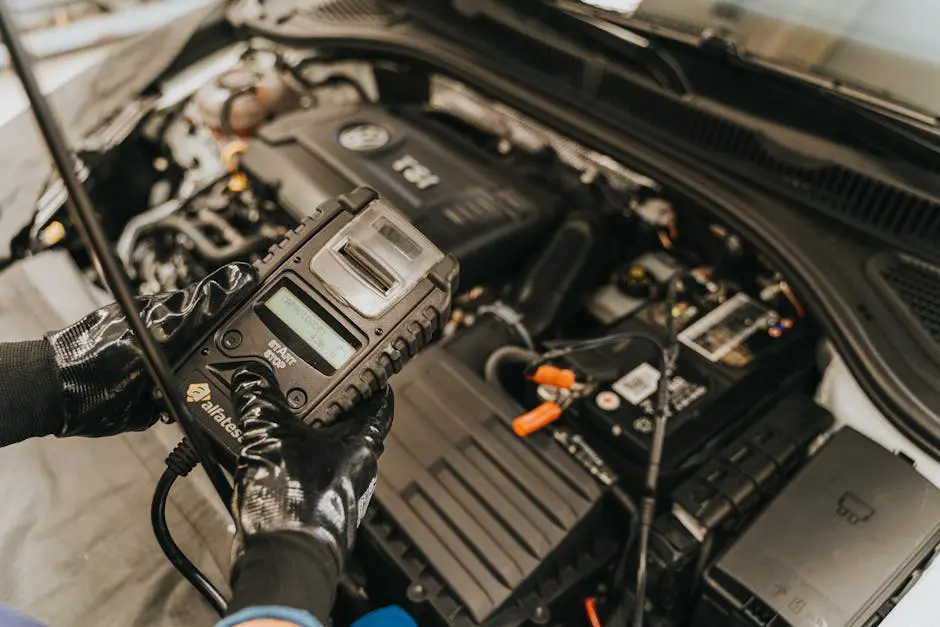What Happens During a Vehicle Diagnostic Check?
Understanding what occurs during a vehicle diagnostic check can help car owners stay informed about the health of their vehicle. This process is crucial for identifying issues and ensuring that your vehicle runs smoothly and safely. In this blog, we will break down the steps involved in a vehicle diagnostic check to provide you with a clearer picture.
Understanding the Purpose of a Diagnostic Check
A vehicle diagnostic check is essential for identifying hidden issues in your car. It helps pinpoint failures before they become costly repairs. This preventive maintenance ensures safety and enhances performance.
Moreover, understanding the purpose behind these checks can empower you as a vehicle owner. By knowing what to expect, you can better communicate with your mechanic, ensuring that the services you receive are tailored to your needs.
Essentially, the vehicle diagnostic check acts as a comprehensive health examination for your car. Just like a doctor's visit can reveal underlying health problems, this check provides insights into your vehicle's condition and potential issues.
Initial Inspection of the Vehicle
The first step in a vehicle diagnostic check is the initial inspection. This involves a visual assessment of the vehicle to identify any apparent problems, such as fluid leaks, worn tires, or damaged belts.
During this phase, mechanics will also check the vehicle's history for any previously recorded issues. This background can be crucial as it sets the stage for understanding the current condition of your car.
Additionally, this inspection may include checking the battery and various electronic systems, ensuring that everything is functioning correctly. By addressing any visible issues right away, mechanics can approach the diagnostic process with a clearer perspective.
Finally, this step concludes with a thorough discussion between you and the technician. They'll explain any visible concerns they notice, and you are welcome to share any symptoms you have experienced, which can further guide the diagnostic process.
Using Diagnostic Tools and Software
Once the initial inspection is completed, the next step involves utilizing specialized diagnostic tools and software. These tools are like the high-tech equipment used by doctors to gain a more precise understanding of a patient's condition.
Mechanics will typically connect a diagnostic scanner to the vehicle's onboard computer. This device reads the trouble codes stored in the system, which indicate specific issues that may not be visible during the visual inspection.
The process allows mechanics to access real-time data about various vehicle systems, including the engine, transmission, and exhaust. This data is invaluable as it often reveals problems that could lead to significant repairs if left unaddressed.
Lastly, using these tools not only saves time but also ensures accuracy in diagnosing the vehicle's issues. By combining the information gathered from the diagnostic equipment with the initial visual inspection, the mechanic can form a comprehensive understanding of the vehicle's health.
Interpreting the Diagnostic Codes
After retrieving the diagnostic codes, the next important step is interpreting these codes. Each code corresponds to a specific problem within different systems of the vehicle, ranging from minor issues to major malfunctions.
Understanding what each code means requires training and experience. Fortunately, most diagnostic tools come with detailed libraries that help technicians quickly determine the meaning of each code and identify possible solutions.
Once the codes are decoded, mechanics can prioritize the issues based on severity. Some problems may need immediate attention, while others could be scheduled for future repairs, giving car owners flexibility in managing their vehicle upkeep.
Finally, interpreting these codes also involves reviewing symptoms related to the vehicle's performance. This ensures that the diagnosis reflects not only the codes but also how the car is functioning, leading to more effective repairs.
Recommendations for Repairs or Services
After thoroughly analyzing the diagnostic data, mechanics will present their findings and recommendations for repairs or services. This is a critical stage in the vehicle diagnostic check, as it guides you on the necessary steps to keep your car running smoothly.
Typically, the recommendations will detail both immediate repairs and any preventative services that could save you from future headaches. For instance, if a component is showing signs of wear, the mechanic might suggest replacing it sooner rather than later.
Moreover, clear communication about the costs and time for repairs is essential. A trustworthy mechanic ensures that you are not only aware of the repairs needed but also provides transparent pricing and expected timelines. This can help avoid any surprises when it comes to your bill.
In summary, this phase culminates in a comprehensive plan for your vehicle's health. With the recommendations in hand, you can make informed decisions about which services to proceed with, ensuring your vehicle remains in peak condition.
Summary of Vehicle Diagnostic Checks
A vehicle diagnostic check is an essential process for maintaining your car's performance and longevity. By understanding what happens during this check, you can be more proactive in addressing any potential issues that arise, ensuring a safer and more reliable driving experience.


